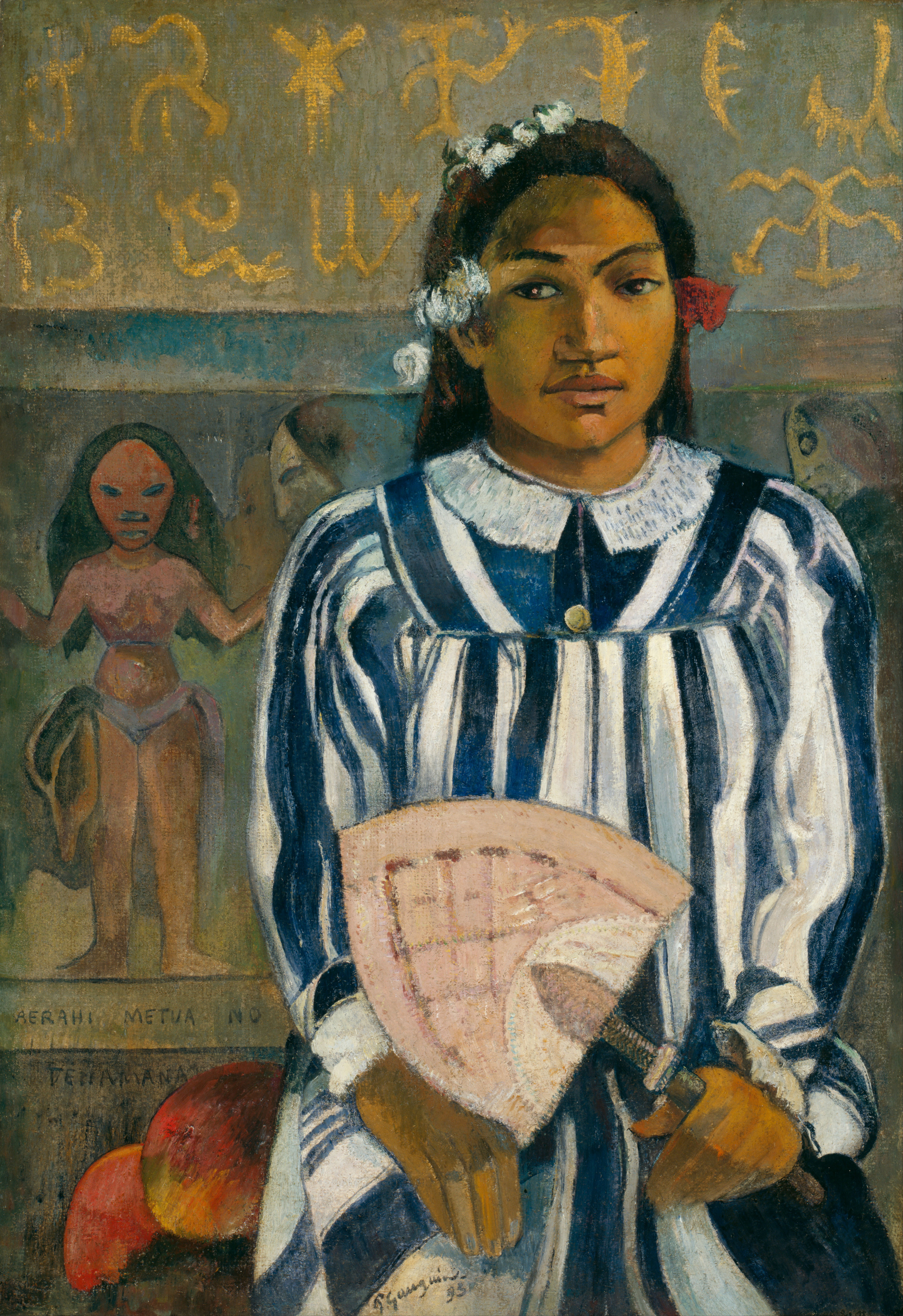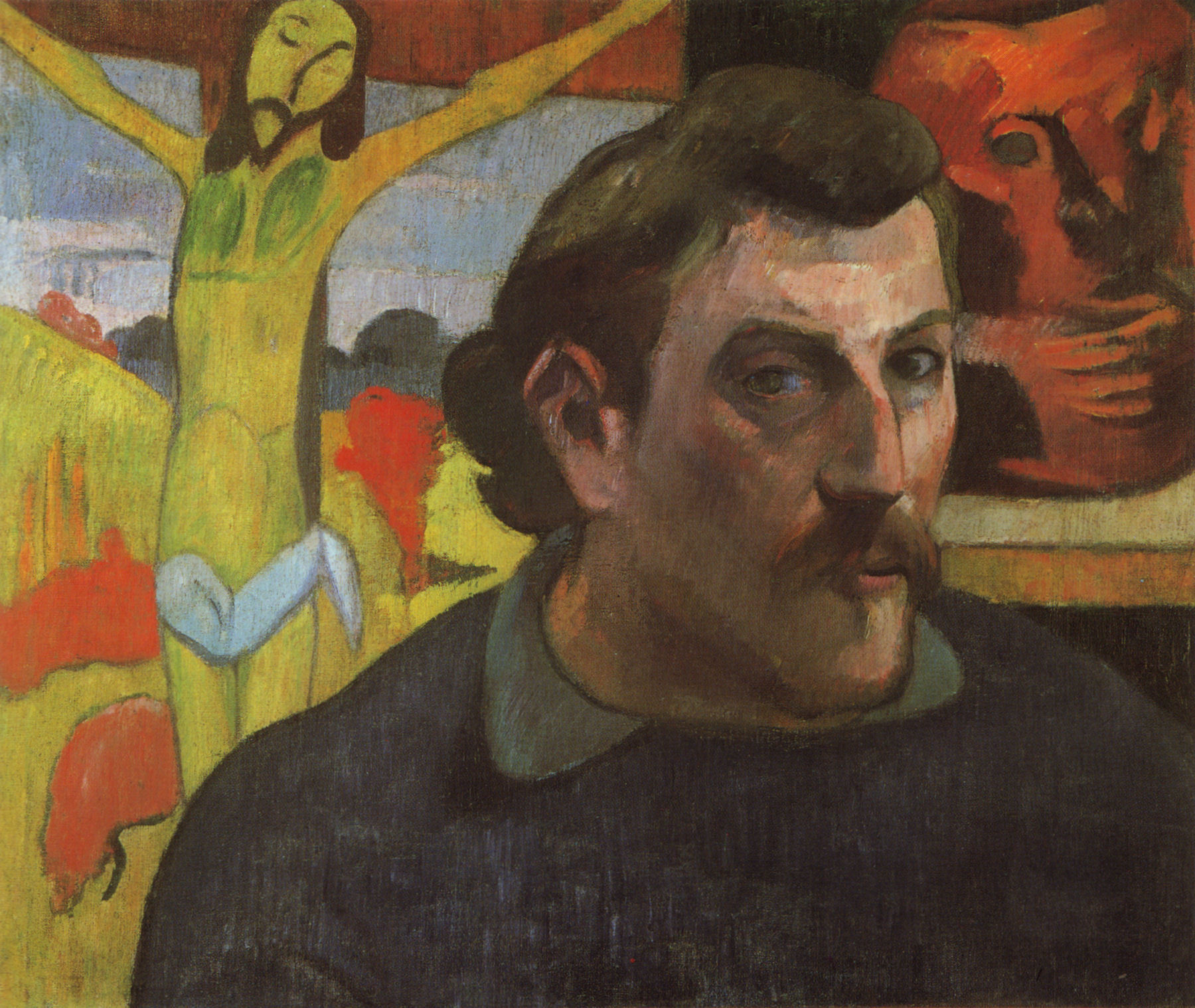The painting is a portrait of Paul Gauguin's native Tahitian wife Teha'amana, made during his first visit to the island from 1891-1893. This marriage has always provoked controversy: it was arranged and completed in the course of a single afternoon and Gauguin claimed Teha'amana was just thirteen years old at the time. It was extremely common in this period for French colonists to take native wives; the wives simply referred to as vahine, Tahitian for "woman." These vahines were often very young, the marriages being arranged by their family for reasons of status or financial advantage. The daughters usually entered such marriages willingly, as the marriages were generally non-binding and the girls free to return home at any time. Here, Teha’amana is wearing the prim dress imposed on native women by European missionaries, a sign that Tahiti was not quite the “primitive” paradise the artist had hoped to find. The Tahitian title Gauguin inscribed on the canvas, “Merahi metua no Tehamana” (Tehamana Has Many Parents), refers to the local custom of sharing children between real and foster parents. He later adopted the French title “Les aïeux de Tehamana” (The Ancestors of Tehamana), which suggests the ancient belief that Tahitians descended from the union of the deities Ta’aroa and Hina. The figure on the wall to the left is Hina, presented in a pose borrowed from Hindu sculpture.




Merahi metua no Tehamana
oil on canvas • 76.3 × 54.3 cm
 Paul Gauguin
Paul Gauguin